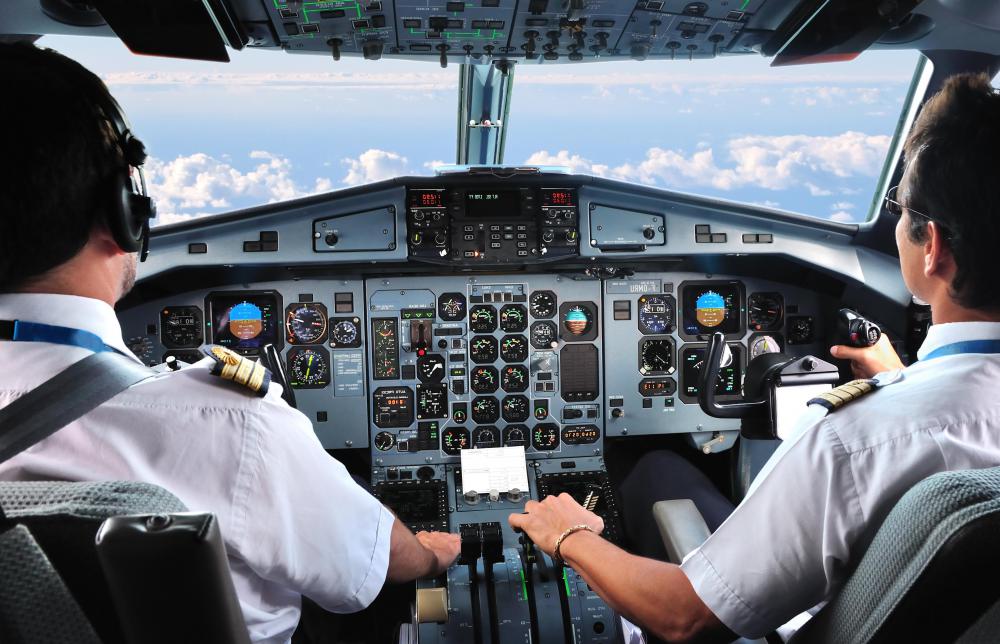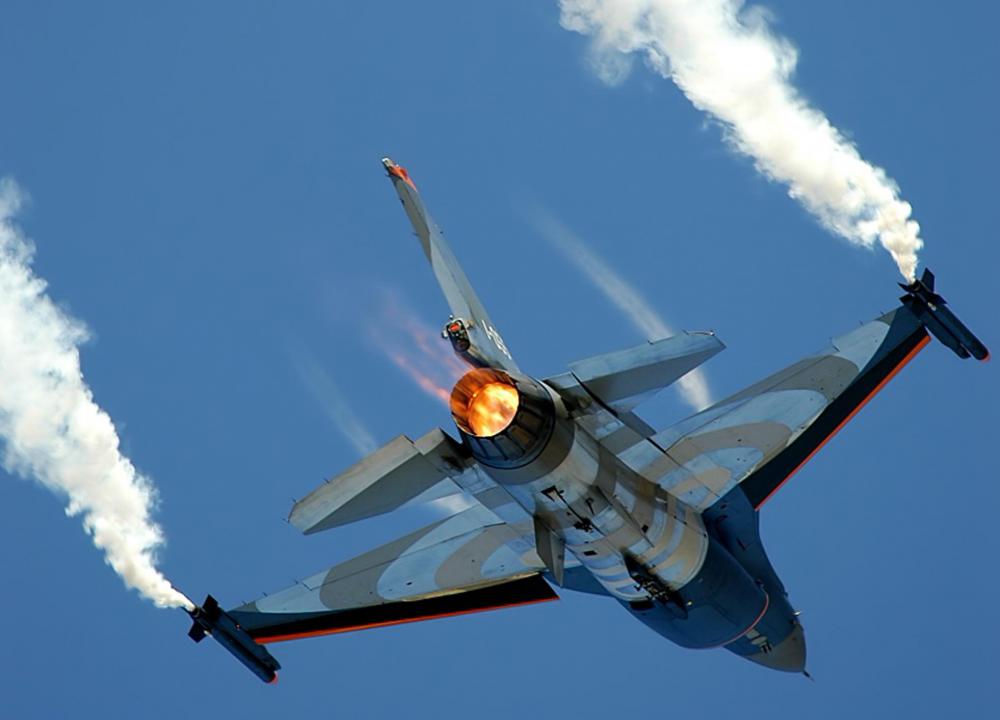At InfoBloom, we're committed to delivering accurate, trustworthy information. Our expert-authored content is rigorously fact-checked and sourced from credible authorities. Discover how we uphold the highest standards in providing you with reliable knowledge.
How does a Jet Engine Work?
The gas turbine, or jet engine, was the first alternative to the propeller as a means for providing thrust to move an aircraft through the sky. Like most engines, the jet is an internal combustion engine, which produces thrust through the classic four-stroke cycle: induction, compression, ignition and exhaust. Unlike propeller planes, which convert the superheated exhaust of internal combustion into mechanical power to drive a rotor, jet engine thrust comes directly from exhaust, ejected from the rear of the tube-shaped engine. While a propeller planes' maximum speed is around Mach 0.8, various jetplanes can reach speeds of Mach 15 or higher (see scramjet), though Mach 1.0 to 2.0 is more typical.
The world's first jet engine plane, the He 178, was designed during the late 1930s by German engineer Hans von Ohain, and flown from Marienehe aerodrome by test pilot Erich Warsitz on 27 August 1939. England flew its first jet engine plane in 1941. American-born designs were not implemented until the 1960s. The creation of the jetplane was a milestone in aviation not seen since the Wright Brothers' historic flight at Kitty Hawk.

The jet engine was originally developed to overcome the diminishing returns of propeller-based designs when the radial speed of the propellers began to approach the speed of sound. As opposed to accelerating a large mass of air a little bit, as in a propeller, the jet engine works on the principle of accelerating a smaller mass of air to a very high velocity. Instead of being mounted at the front of the plane like a propeller, a jet engine is mounted on the wings or at the rear of a plane.

The jet cycle begins when rapidly moving air is sucked into a chamber at the front of the engine, then compressed by a series of blades that move at progressively higher rpms. The intake port, because it sucks air directly from the flight path of the aircraft, is covered by a wire mesh or grille to prevent the entry of foreign objects. When the moving air has reached a high level of compression, it is combined with fuel and ignited, being ejected out the exhaust port at the rear of the jet engine. Because of the tremendous amount of heat generated, sophisticated cooling systems are required to prevent the internals of the engine from melting.

There are many different variants on the design of the jet engine, which mix different structures and techniques to create jetplanes suited to varying speeds and altitudes. These variants include the turbojet, turbofan, ramjet, scramjet, pulsejet, and several others.
AS FEATURED ON:
AS FEATURED ON:















Discussion Comments
@ FramMaker- Ramjet and scramjet engines are not well suited for passenger aircraft jet engines. They operate at highest efficiency above mach three. Ramjet and scramjet engines cannot self-launch either. They need to be launched by some other of propulsion system like a rocket powered rail launcher.
Jet turbine engines can operate at much lower speeds, and they can launch from a standstill, making them ideal for most commercial applications. They are most efficient at much lower and safer speeds.
@ FrameMaker- A ramjet engine has no internal moving parts. Turbine engines on the other hand have a turbine that spins within the engine to compress the incoming air to create enough thrust to propel the aircraft.
A ramjet is an engine that has an inlet, a combustion chamber with fuel injectors, and an outlet. The air enters the engine at high speeds, is mixed with fuel, undergoes combustion, and then exits as exhaust, the force of which creates thrust. When the incoming air is combusted at subsonic speeds it is a ramjet, at supersonic speeds it is a scramjet.
Turbine jet engines involve using a turbine or internal propeller to compress the air and aid in combustion. Their design is more advanced than a ram jet engine, and it relies on moving parts within the engine. It is much more damaging (to the engine) when a bird is sucked through a turbine jet engine than a ramjet engine.
What is the difference between a jet turbine engine and a ramjet engine? What are the advantages and disadvantages of each?
Post your comments